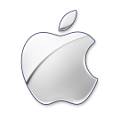Mobile Display – Since Apple’s sapphire cover glass supplier GT Advanced Technologies went into administration, discussion of the the ultra-hard cover glass technology has been pushed to the forefront of the business news world.
Comparing the specifications that sapphire delivers with other cover glass, such as Corning’s Gorilla Glass and its variants, and it becomes obvious to display makers why Apple did not use the material in its larger displays.
Beyond Retina-class pixel density and larger screen sizes, what is really at the forefront of new mobile displays today is screen readability and low reflectance levels in high ambient light (daylight readability). This is evidenced by Apple’s latest iPad Air 2 flagship tablet. Apple has achieved a massive 3:1 boost in virtually all display metrics including screen readability, image contrast and color saturation in ambient light, over previous iPads and 2:1 improvements over the current best low reflectance tablets and smartphones from Apple’s top competitors.
These results are from the recent reports from Dr. Ray Soneira’s DisplayMate Labs, measuring the new iPad Air 2 with a mere 2.5% screen reflectance that represents, “by far the lowest we have ever measured”. Soneira went on to state that this “…makes it extremely unlikely that Apple will ever use Sapphire, with 8.0% screen reflectance, on future iPhones”. This appears highly likely, as sapphire reflects three times the amount of ambient light and that moves the display in the wrong direction. Applying an anti-reflection coating over a sapphire cover glass nullifies the purpose of using the ultra-hard scratch resistant sapphire and would be pointless, since any material (other than sapphire) is not as hard or nearly as scratch resistant.
But Apple or one of Apple’s suppliers (Apple calls it a custom coating implying it is Apple’s) has found a way to treat its Gorilla Glass with an anti-reflective coating that gets the job done, or so surmises Soneira. He told us in a follow-up telephone interview that, while he has not done a scratch test, he is confident that either Corning or (more likely according to Soneira) a specialty optical coatings company, has found a way not only to protect the new Apple tablet surface from scratches, but gains a 2X boost over the previous anti-reflective display leader, Samsung. “I’ve been harping on the cosmetic mirror effect [high image reflectance] of outdoor mobile device viewing since 2005, much to the chagrin of the manufacturers”, Soneira told us. He also said that to Samsung’s credit, the company has pioneered low reflectance screens (based on quarter wave plates) for its OLED displays, and Apple with its anti-reflection coating over the cover glass is first to do this.
“The most important improvements for both LCD and LCD mobile displays will come from improving their image and picture quality and screen readability in ambient light, which washes out the screen images, resulting in reduced image contrast, color saturation, and color accuracy. The key will be in implementing automatic real-time modification of the display’s color gamut and intensity scales based on the measured ambient light level in order to have them compensate for the reflected light glare and image wash out from ambient light”, Soneira wrote.
So with full daylight performance the next frontier in mobile displays, don’t look for high glare sapphire coatings that, while get you the hardness most users want, also come with the unacceptable trade-off of high screen reflectance that blocks that beautiful tablet or Smart Phone image in bright daylight settings. – Steve Sechrist

